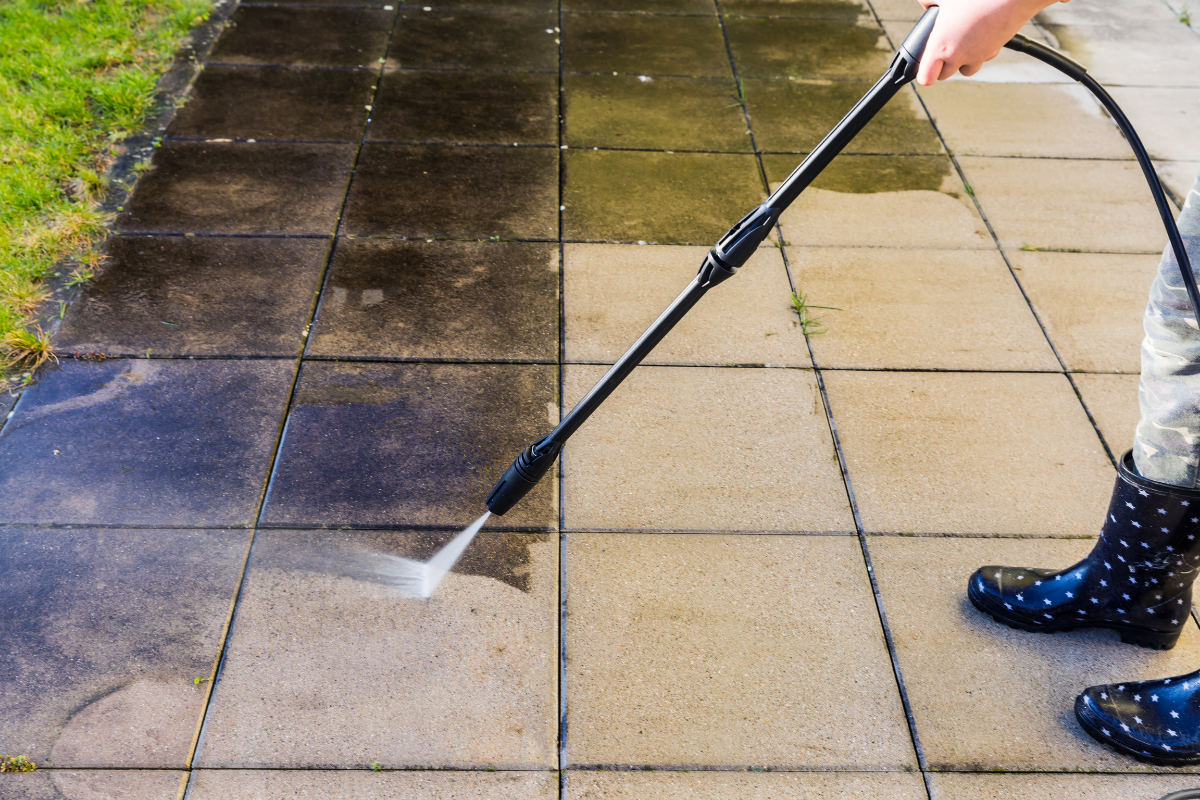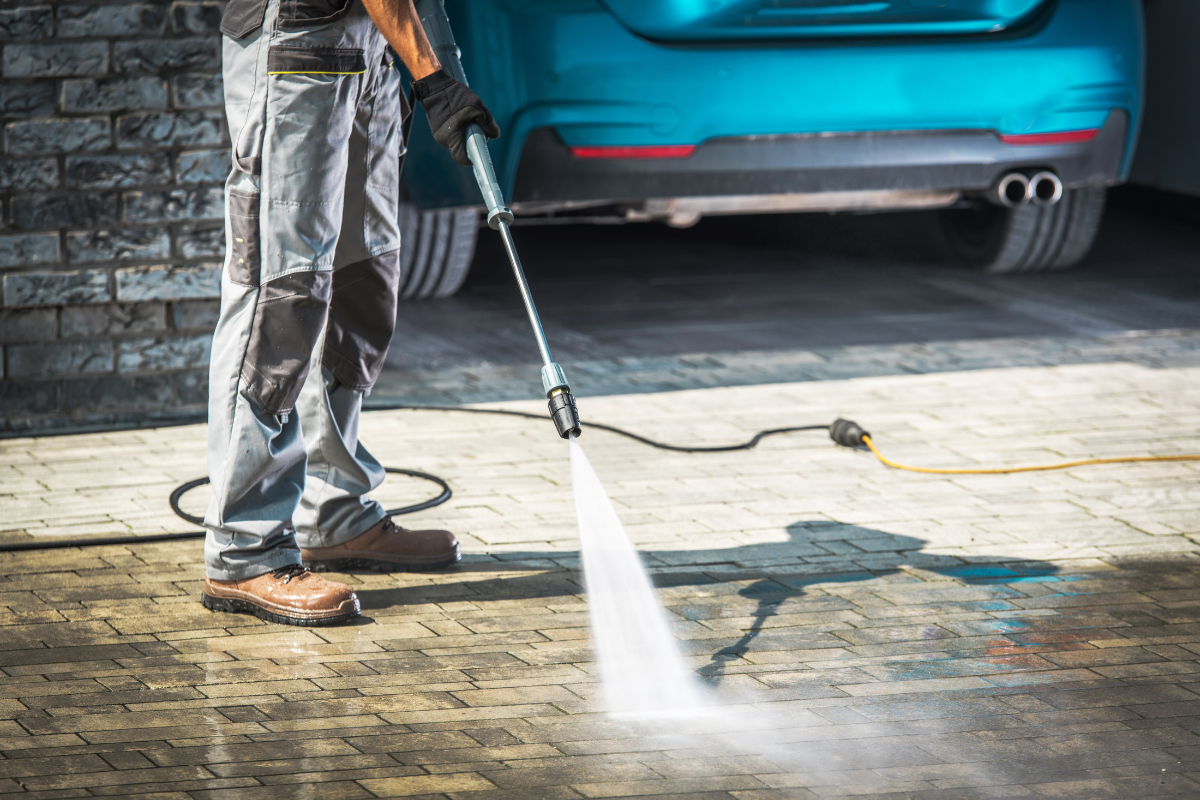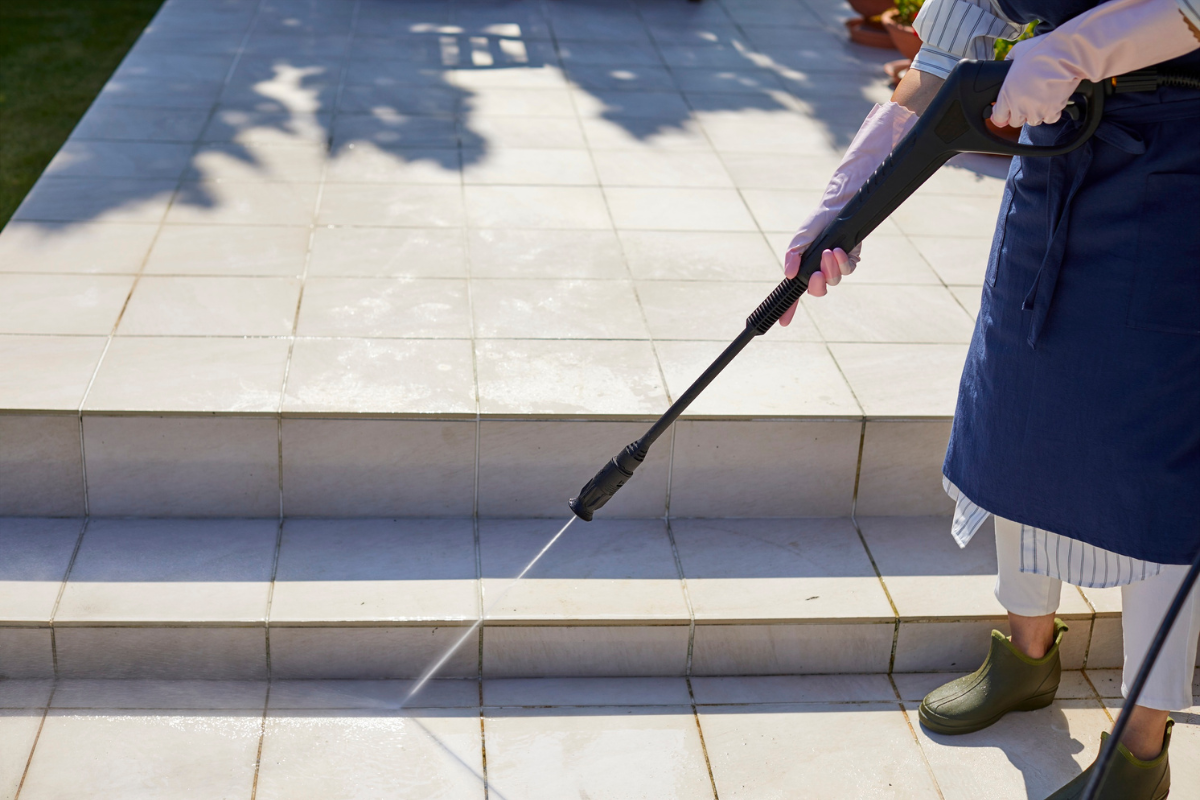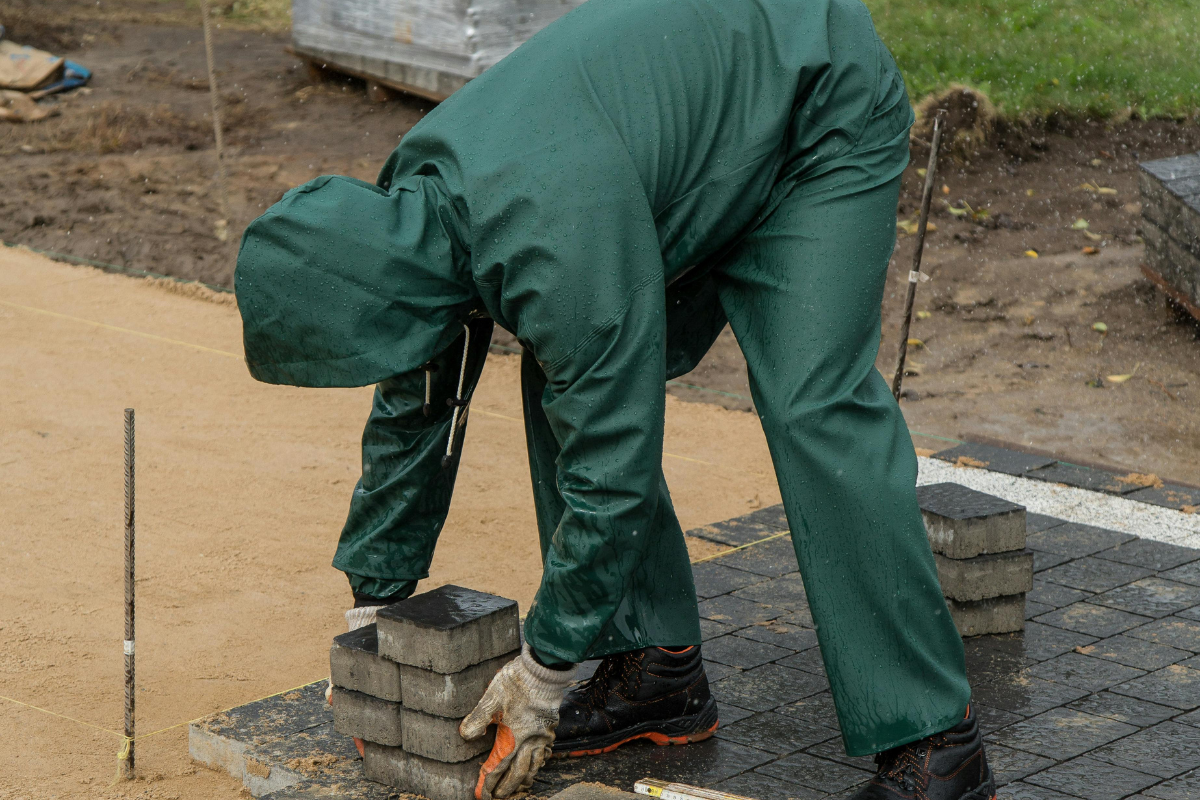
How Paver Sealing Protects Against Mold, Mildew, and Weeds



Pavers look unbeatable on day one. The lines are crisp, the color pops, and the surface feels tight underfoot. Then the calendar flips, rainy season hits, and the first shadows of green creep into the joints. Mold freckles appear where water lingers. Ants start mining the sand. Most homeowners assume this is “just what pavers do,” but that’s not the full story. With proper preparation and a quality paver sealer, you can shut down the conditions that let mold, mildew, and weeds take hold, and you can do it without locking yourself into a glossy, slippery mess.
I’ve cleaned and sealed hundreds of driveways, patios, and pool decks in Florida’s humidity and heat. The pattern is consistent: pavers that are thoroughly cleaned, re-sanded correctly, and sealed with the right product stay brighter, drier, and cleaner for years. The unsealed or poorly sealed jobs, even on the same street, show black algae staining, joint loss, and weed growth within one to two seasons. The difference comes down to moisture control, joint stabilization, and the microbial food chain.
The micro-environments that feed growth
Mold and mildew don’t appear out of thin air. Spores are everywhere, riding the breeze and settling across surfaces. What determines whether they colonize your pavers is a mix of moisture, shade, and organic residue. Sand-filled joints hold water like little gutters. Porous pavers wick moisture. Leaves and pollen break down into a fine film that feeds fungi. Shady corners and north-facing edges dry slowly, especially after afternoon thunderstorms.
Weeds follow a similar script. Seeds drop into joints, find a damp cradle, and set roots into the bedding sand. Ants help by tunneling and pushing joint sand onto the surface, which leaves deeper pockets where seeds can settle. Without a barrier, water carries nutrients down into those gaps and the cycle continues.
Sealing isn’t a magic shield against nature, but it shifts the balance. A good paver sealer reduces water absorption, locks joint sand into place, and makes the surface easier to keep clean so it doesn’t become a buffet for microbes.
How sealers work at the material level
Not all paver sealers work the same way. Some are film-forming, creating seal pavers before and after a micro-thin topical layer that sits on the surface. Others are penetrating, soaking into the paver and binding with the substrate. Each approach affects moisture, color, and traction differently.
Concrete pavers are like sponges under a microscope. Capillaries carry water and dissolved minerals into the body of the stone, which contributes to efflorescence and dark, damp spots. When you apply a penetrating sealer, it lines those capillaries with hydrophobic chemistry. Water beads and sheds, rather than soaking in. Film-forming sealers go a step further by creating a thin membrane that slows evaporation through the face of the paver and blocks new absorption from the top. That combination disrupts the moisture cycle mold and mildew prefer.
Joint stabilization is the second pillar. Many modern sealers are designed to bind with joint sand. When you wash and resand before sealing, those grains absorb sealer and lock together as they cure. The result is a firm, breathable joint that resists washout and ant mining, and that deprives weed seeds of a loose, wet pocket. I’ve seen patios lose half their joint sand after a single storm when the surface was never stabilized. The same patio, restored with an angular polymeric or washed sand and properly sealed, kept its joints intact through a full rainy season and hurricane-strength gusts.
Cleaning first, then sealing, or why sequence matters
A sealer traps what it touches. If you seal atop algae, spores, or embedded organics, you’re inoculating them beneath a protective layer. Even if the job looks good for a month, the growth comes back from underneath. Proper prep is eighty percent of the result.
This is where a skilled pressure washing service earns its keep. Raw pressure is not the goal. Water volume, tip selection, and technique matter. I use a surface cleaner for broad, even passes and a low-pressure rinse to avoid scarring. On heavily stained areas, a pre-treatment with a biodegradable detergent and a dilute sodium hypochlorite solution helps break the bond of biofilm without etching the pavers or bleaching the joints. If you’ve searched for driveway pressure washing near me, licensed and insured pressure washing you’ve probably seen a range of offers and price points. The right provider explains their chemistry, their rinsing steps, and how they’ll protect surrounding plants.
The cleaning step should include the joints. Blowing out loose sand with a fan-tip rinse reveals graffiti removal low spots and removes entrenched material that feeds weeds. After cleaning, the surface needs time to dry. In Lutz and similar Gulf Coast climates, that means a gap of at least 24 hours of dry weather, sometimes more in cool or humid conditions. I’ve carried moisture meters and found that pavers that feel dry to the touch still hold enough interior moisture to compromise sealer adhesion. Patience here pays off.
If you are looking for paver cleaning Lutz, you’ll notice that the best crews schedule around the weather, not the calendar. They’d rather push a job two days than trap moisture that will haze the sealer later.
Choosing a paver sealer that fits the site
There’s no one-size sealer. Pool decks are different from shaded courtyards. Driveways see hot tires and dripped automotive fluids. A north-facing walkway under oaks lives with tannins and leaf litter. Consider the site, the paver type, and the look you want.
Film-forming acrylics come in water-based and solvent-based formulas, with finishes from natural matte to wet-look gloss. They deepen color and can offer strong joint stabilization. They are easy to maintain because you can apply a rejuvenation coat without full stripping if the original product was water-based and compatible. Solvent-based products handle hot tire pickup better, but they’re smellier, and in some regions they are restricted.
Penetrating sealers are subtle. They don’t change the appearance much, but they do reduce water absorption and make cleaning easier. On a shaded pathway that you want to keep slip resistant, a penetrating product with strong hydrophobic properties might be the safest call. On a tumbled travertine deck around a pool, a penetrating or hybrid sealer is almost always the right play. I’m cautious with high-gloss films on any area that gets wet underfoot. On driveways, a mid-sheen water-based acrylic often strikes the balance between color enhancement and practicality.
Thickness matters too. More is not better. A heavy, puddled coat can trap moisture and haze. Two even coats, applied crosswise with the correct coverage rate, build a more uniform barrier. A reputable paver sealing provider will measure square footage and calculate product volumes rather than guessing. If you ask for paver sealing near me and the estimate doesn’t specify the product type and coverage rate, keep asking questions.
The science behind mold, mildew, and moisture control
Mold and mildew are terms people use interchangeably, but in practical terms both are fungal growth thriving in damp, shaded areas with available nutrients. On pavers, the nutrient source is often micro debris: microscopic leaf fragments, pollen, dirt, and algae. Rainwater delivers nutrients and keeps the surface wet long enough for spores to germinate.
Sealers interrupt that cycle in three ways. First, by reducing porosity, they limit how long the surface stays wet after a storm or an irrigation cycle. The faster the surface dries, the less time spores have to hydrate and colonize. Second, by smoothing micro-roughness and filling tiny voids, they make it harder for debris to lock into the surface. Rinsing becomes more effective. Third, by stabilizing sand, they reduce the damp, loose substrate that weeds and algae exploit along the edges of each paver.
A well-sealed surface still needs light maintenance, but the difference is stark. On unsealed pavers in a shaded Florida courtyard, I’ve measured dark algae regrowth within 3 to 6 weeks in summer. On sealed pavers maintained with periodic low-strength cleaning, similar areas stay clear for months, sometimes a full season, depending on tree cover and irrigation.
What sealing can’t do, and where people get misled
Sealing isn’t a guarantee against every weed. If a neighbor’s oak showers your patio with acorns and the joints collect soil, some seeds will sprout on top of the joint line. Birds drop seeds where they please. The sealer’s job is to make those sprouts shallow and easy to remove, not to turn your patio into plastic. Likewise, a sealer won’t fix structural issues. If your base is settling or water pools because of improper slope, mold and mildew will still find wet pockets. Address drainage and leveling first.
Another common misunderstanding is gloss equals quality. A high-gloss finish can look freshly wet and dramatic, but it often shows roller marks and scuffs, and it can be paver repair and releveling slick when wet. On pool decks, glossy films can become an insurance claim waiting to happen. If you want richer color without gloss, ask for a low-sheen or natural-look product that contains color-enhancing resins.
Finally, no sealer lasts forever. In high UV zones, expect two to three years of protection from good water-based acrylics on horizontal surfaces, and a bit longer from premium solvent-based blends. Penetrating sealers often hold their water-repellent effect for three to five years, but they won’t keep joints tight on their own. Plan on maintenance, not a one-and-done miracle.
The right way to clean and seal, step by step
Below is a concise sequence I use on most residential jobs. Skip steps and you invite problems. Change the order, and you might trap moisture or waste product.
- Inspect and test: identify stains, efflorescence, previous sealers, drainage issues. Perform a small water drop test to gauge absorption.
- Pre-treat and clean: apply appropriate cleaners for organics or rust, then use a surface cleaner and controlled rinsing to remove debris and failed joint sand.
- Dry and resand: allow adequate drying time, then sweep in a washed, angular sand to slightly below the chamfer. Compact gently and top off as needed.
- Edge and protect: tape and shield adjacent surfaces, wet nearby plants, and check weather. Avoid windy conditions that spray mist onto unintended areas.
- Seal in two coats: apply thin, even coats according to manufacturer coverage rates. Allow proper flash time between coats and keep foot and vehicle traffic off until fully cured.
That’s as simple as the process gets. Each step has nuance. For example, if the pavers show efflorescence, you need to treat it before sealing or it will bloom under the film. If a previous solvent sealer is failing, you may need to strip it rather than stack a water-based product on top. A reliable washing and sealing provider will catch these details before anyone opens a can.
Real-world scenarios: what success looks like
A driveway in a full-sun cul-de-sac with medium-gray concrete pavers had tire marks and scattered algae around the shaded edges near the garage. After a careful pressure washing, we used a penetrating color enhancer on a test section to confirm the look, then switched to a mid-sheen water-based acrylic for the full drive. We resanded the joints to 1/8 inch below the chamfer and stabilized them with the sealer. Twelve months later, even with irrigation overspray, the homeowner’s maintenance was a monthly garden-hose rinse and a quick broom pass. No visible mold, no weeds, and no sand loss, just slight dusting near the entry apron.
A pool deck under screen enclosure with travertine had chronic mildew lines along the coping. The owners had tried a glossy sealer from a big-box store that made the deck slippery and tracked footprints. We stripped the film, neutralized, and allowed a two-day dry. We applied a breathable penetrating sealer formulated for natural stone. The deck kept its natural feel, dried faster after swimmers climbed out, and stayed clear of mildew through the summer, even on the shaded north edge. The homeowners used a light citrus cleaner once a month instead of bleach, which preserved the sealer and the plants around the pool.
A shaded side patio in Lutz under live oaks collected tannin stains and sprouted weeds every rainy season. The base was solid, but the joints were low and loose. We performed thorough paver cleaning Lutz homeowners usually need: pre-treat for organics, soft-wash, rinse, then resand with polymeric sand and compact. We used a natural-look sealer with strong joint stabilization. The polymeric sand locked in, and the sealer added a secondary bond. For two summers, occasional leaf blowing and a mild wash kept the patio looking fresh. A handful of windblown seeds did sprout on top of the joints, but they were shallow and pulled with fingertips.
Maintenance that preserves your investment
The biggest change after sealing is how you maintain the surface. Bleach-heavy mixes used every couple of weeks may cut through organics, but they degrade sealers faster than anything else. Strong solvents or degreasers can stain or dull a film finish. You need a softer touch.
Think of sealed pavers like a well-waxed car. Dirt still lands, but it doesn’t bond. Rinse more, scrub less. A garden hose and a soft-bristle deck brush handle most dirt. For algae, use a diluted, manufacturer-approved cleaner with sodium hypochlorite in the 0.5 to 1 percent range, followed by a thorough rinse. Pull weeds as soon as you see them. Keep irrigation heads aimed away from pavers where possible, or reduce run time. Blow leaves weekly if trees overhang the area. These small actions extend the life of the sealer and keep organics from building up.
If you prefer to outsource, a good pressure washing service will offer a light maintenance wash at set intervals. They’ll use lower pressure and the right nozzles to avoid scarring. When you search for pressure washing or washing and sealing, look for companies that talk about chemistry, water volume, and sealant compatibility, not just PSI.
Costs and timing: what to expect
Pricing varies with region, surface condition, and product choice. For a straightforward residential driveway, cleaning and sealing can range from a few dollars to several dollars per square foot. Heavily stained surfaces, stripping old failed sealer, or complex layouts can push costs higher. Quality materials cost more up front but reduce callbacks and premature wear.
Timing matters too. In humid climates, plan the project for a drier stretch. I tend to book cleaning on day one, drying and resanding on day two, sealing on day three when the forecast stays clear for at least 24 hours after application. Some jobs can be compressed into two days with heat, air movement, and low ambient humidity. Rushing saves a calendar day and risks a one- or two-year headache.
If you’re comparing quotes after searching paver sealing near me or driveway pressure washing near me, evaluate more than price. Ask about product brands, coverage rates, number of coats, drying time between steps, and how they handle edge cases like efflorescence or previous sealers. A detailed plan signals a professional who understands the variables that cause most failures.
Common pitfalls and how to avoid them
Shiny haze within a week of sealing almost always points to trapped moisture or over-application. If you see milky patches after an overnight dew, call the installer. Sometimes a controlled application of solvent or a re-emulsifying pass can relieve the haze. Other times, patience and sunlight resolve it as the moisture works out through micro-channels.
White powder on the surface months later is often efflorescence. It’s a mineral deposit, not a mold. You can treat it with an efflorescence cleaner, but be cautious: acids can dull or damage sealers. In recurring cases, the source is usually moisture from below. Improve drainage and consider a breathable sealer on the next cycle.
Peeling or flaking typically comes from applying a solvent sealer over a water-based film without proper prep, or vice versa. Make sure your contractor identifies the existing product. A simple solvent test can reveal the base chemistry. If they can’t describe it, be wary.
Weeds that keep returning often mean joint sand is too low or wasn’t properly stabilized. Refill joints to the correct depth and ensure the sealer saturates the top layer. In heavy traffic areas, plan for a touch-up of joint sand when you reseal.
Why sealing pays off beyond cleanliness
The obvious benefits are visual: richer color, cleaner lines, fewer green stains. The less obvious benefits show up in structure and safety. Stabilized joints reduce edge chipping, especially on drives that see turning tires. Sealed surfaces shed oil and rust more readily, which keeps stains from becoming permanent. Pool decks dry faster, improving traction. The property holds a well-cared-for look that matters for curb appeal and resale. When I compare maintenance records, sealed paver systems typically require 30 to 50 percent less aggressive cleaning over a two-year period, and they hold their joint height far better in storms.
If you plan to keep your home for several years, the math favors sealing. You’ll spend on materials and labor up front, but you’ll save on frequent heavy cleanings, joint refills, and spot repairs. More importantly, you’ll spend less Saturday time scrubbing with a bleach bottle.
A quick checklist before you hire
- Confirm the contractor’s process: cleaning, drying, resanding, sealing in two coats.
- Ask which paver sealer they recommend for your specific surface and why.
- Verify coverage rates, cure times, and traffic restrictions in writing.
- Ensure they account for weather and have a plan if conditions change.
- Request maintenance guidance tailored to your site, trees, and irrigation.
A careful process and the right product turn pavers from a seasonal chore into a low-maintenance surface that resists mold, mildew, and weeds. Whether you’re calling a local pro for paver cleaning Lutz jobs or hunting for a pressure washing service you can trust, look for expertise that goes beyond a power washer and a bucket. The protection you buy is not just a layer of sealer, it’s the knowledge of how moisture moves, how sand behaves, and how small details add up to a patio or driveway that still looks new when the next rainy season rolls through.
Bulletproof Pavers
Address: 1523 Green Meadow Dr, Lutz, FL 33549
Phone: (813) 401-0693